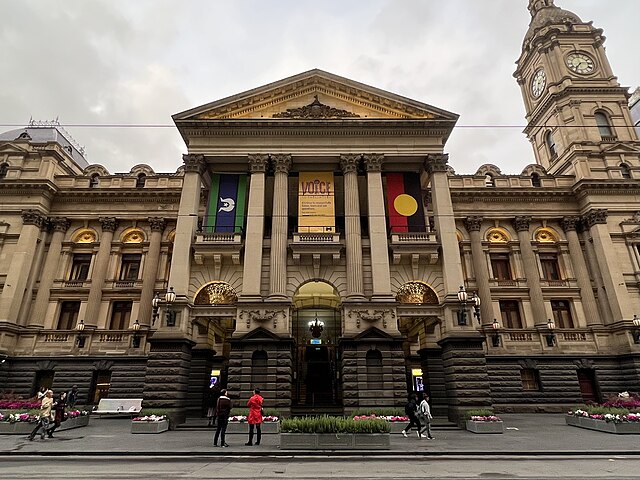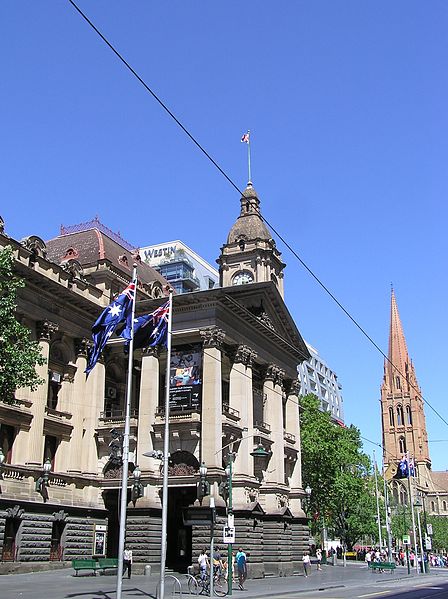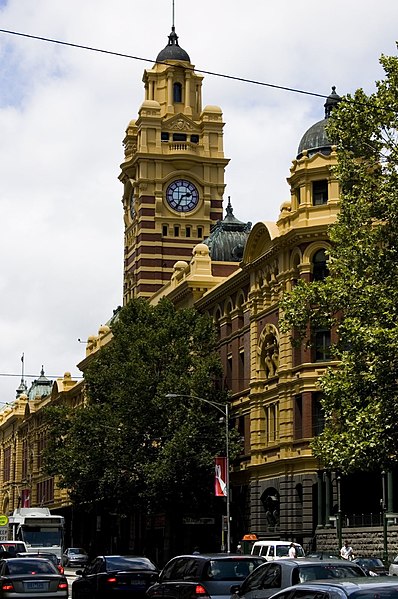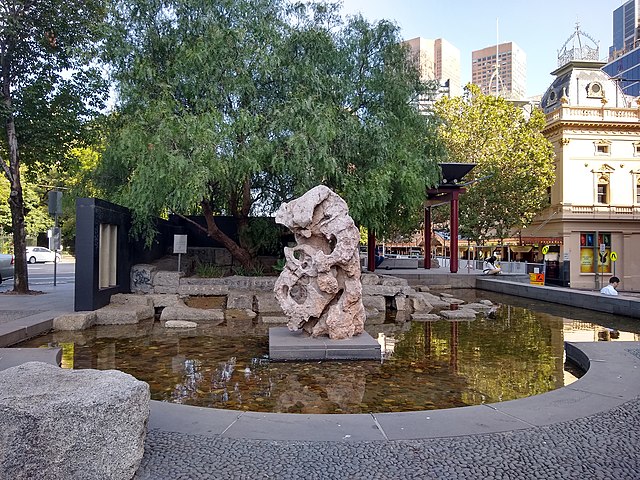Melbourne Town Hall, often referred to as simply Town Hall, is the administrative seat of the local municipality of the City of Melbourne and the primary offices of the Lord Mayor and city councillors of Melbourne. Located on the northeast corner of Swanston and Collins street in the central business district of Melbourne, Victoria, Australia, the building was completed in 1887 and heritage listed on the Victorian Heritage Register in 1974. The building is frequently used for art and cultural events such as concerts, festivals, theatrical plays and exhibitions.
Melbourne Town Hall, October 2023
Melbourne Town Hall, 1910
During the Melbourne International Comedy Festival the Melbourne Town Hall acts as venue to a large number of the performances.
A Napier Waller mural in the Melbourne Town Hall Auditorium beside the proscenium arch
The City of Melbourne is a local government area in Victoria, Australia, located in the central city area of Melbourne. In 2021, the city has an area of 37.7 square kilometres (14.6 sq mi) and had a population of 149,615. The city's motto is "vires acquirit eundo" which means "we gather strength as we go".
Aerial view of the Melbourne skyline from Kings Domain, May 2020
Melbourne Town Hall on Swanston Street built 1870–1887
Flinders Street station
The Tianjin Garden on Spring Street serves as a symbol of Melbourne's close friendship with its sister city Tianjin.








